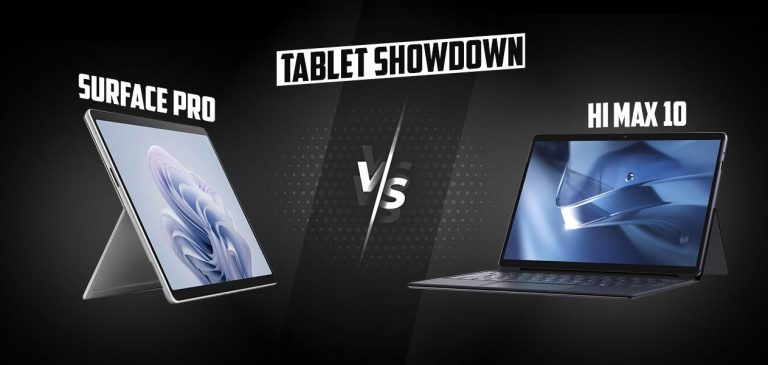How to Clean Your Computer Screen Safely
Our computer screens are our windows to the digital world. But a dust-covered, fingerprint-laden screen can make that view less than ideal. Learning to clean computer screens properly is crucial for maintaining clarity and longevity.
We’ll walk you through how to clean your computer screen safely and effectively in this blog post so that its display is sparkling clear!
Clean Computer Screen: Dust it Off First
Taking care of dust is the first step towards cleaning computer screens. Ensure your monitor is off and disconnected from the power source before starting. These safety measures allow you to see dust particles against the black screen and avoid electrical shock. Dust using gentle circular strokes with a dry, lint-free microfiber cloth.
Because their soft, densely woven strands attract and capture dust particles without damaging the delicate screen surface, microfiber cloths are the perfect instrument for this job. Paper towels and tissues should not be used as they might be abrasive and leave paper fibers or lint on the screen.
The Best Way to Clean Computer Screens: Remove Sticky Smudges
Your best chance of getting rid of stubborn fingerprints and smudges for a clean computer screen is using a slightly moist microfiber cloth rather than a dry one. Distilled water is the ideal cleaning method because tap water may leave behind mineral deposits that cause streaks or a hazy film. If you don’t have any distilled water, you can also get good results by mixing 50/50 distilled white vinegar and distilled water.
Above all, do not spill liquid directly onto the screen. This could result in liquids leaking under the bezel and damage your display’s internal components. Instead, simply moisten a corner of the cloth with your favorite cleaning solution. Ensure the fabric is dry, not damp, but just slightly moist. Gently wipe the screen in smooth, vertical, or horizontal strokes using the moistened corner. Avoid scrubbing or applying too much pressure, which can damage the screen’s covering.
How to Clean a Computer Screen: Remove Hard Dirt
Sometimes, even after using the best way to clean a computer screen, you may still have some persistent dirt. Pre-moistened screen wipes made especially for electronics might be a helpful choice. To ensure the wipes are compatible with the coating on your monitor, look for labels that say, “safe for LCD screens” or “safe for electronics.”
It’s crucial to use these wipes sparingly, though. Pre-moistened wipes are convenient, but some could contain stronger chemicals that, over time, can damage the anti-glare coating or leave streaks on your screen. If you decide to utilize screen wipes, use those specially-made wipes for sensitive gadgets and only when required.
Beyond the Screen: Cleaning the Bezel
Although the screen is the main attraction, pay attention to the bezel, the plastic frame that encircles the screen. Like the screen itself, this area can gather dust and debris. Use a slightly damp microfiber cloth to clean the bezel. But take care not to soak the fabric too much. Excessive moisture might penetrate beneath the screen and harm internal parts.
Using a moist towel, gently clean the bezel while examining the frame’s curves. After cleaning, wipe away any leftover moisture with a dry microfiber cloth to guarantee a streak-free finish. Cleaning the computer screen and bezel will make your setup look more polished and professional.
Fight the Germs: Disinfection Do’s and Don’ts
While learning how to clean a computer screen, you may choose to disinfect it to get rid of bacteria and germs. Most computer screens may be effectively disinfected with 70% isopropyl alcohol. But never blot alcohol directly onto the screen. This could cause streaks or damage to the anti-glare coating. Instead, lightly moisten a corner of your freshly cleaned microfiber cloth with the isopropyl alcohol.
Remember that the material should be somewhat moist, not completely saturated. Cover the entire surface using gentle horizontal or vertical wipes to clean the screen. Take care and keep it covered since the screen’s protective layer may be compromised, and a hazy residue may remain. Use only mild disinfectants and suitable cleaning techniques to keep your screen hygienic and visually clear.
Avoid These Cleaning Blunders: What Not to Do
Unfortunately, cleaning errors can occur even with the best of intentions. The following are things not to clean off your computer screens with.
Using Harsh Chemicals
Certain glass cleaners, ammonia-based solutions, and abrasive cleaners include chemicals that might harm your screen’s delicate anti-glare coating. These substances can deplete or damage the protective layer, resulting in persistent haziness.
Using Too Much Pressure
Scratches may result from using too much pressure when cleaning the screen. Remember that you are cleaning a delicate surface therefore, caution is essential. Avoid scrubbing or applying too much pressure; let the microfiber cloth do the work.
Residual Wet on the Screen
Any residual moisture on the screen may be dangerous. It may leak beneath the bezel, perhaps causing harm to internal parts, or after it dries, leaving behind ugly water stains. Before restarting your computer, make sure the screen is dry. A final rub with a dry microfiber cloth will provide a perfect finish free of streaks.
Read More: Laptop Buying Guide for 2024
A Final Buff for a Flawless Finish
To summarize, keeping a clean computer screen is crucial for the best possible viewing clarity and general health of the monitor screen. You can maintain a dust-free, fingerprint-resistant, and hygienic screen by following these easy procedures and utilizing suitable cleaning methods.
Always use a microfiber cloth and mild cleaning solutions to ensure success and steer clear of solid chemicals and high pressure. Your computer screen can remain spotless and offer a productive and enjoyable computing experience with minimal upkeep.






